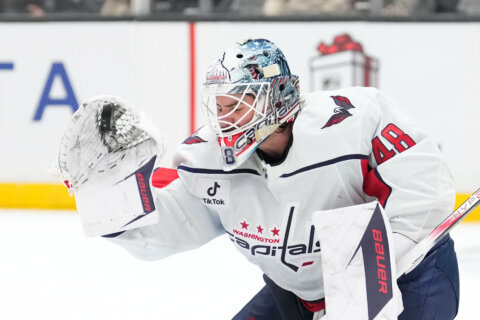After 3 losses, is there reason to be concerned about the Caps' OT play? originally appeared on NBC Sports Washington
Detroit Red Wings forward Dylan Larkin hit the back of the net on Wednesday to hand the Capitals a 3-2 overtime loss, their third loss of the season. The good news is that Washington is 4-0-3 and has yet to lose in regulation, but there may be a curious trend developing. The Caps have gone to overtime three times, all at home and lost all three games.
“Must be the building,” John Carlson said.
Three games is a small sample size, but three games in a row is enough to raise the eyebrows of some that perhaps there may be an issue that needs to be addressed.
“If it happens three times in a row there’s probably some tendencies we need to look at,” Lars Eller said. “I don’t know what it is but we have the personnel and the capacity to be better than going 0-3.”
The issue on Wednesday was not hard to spot.
The Caps initially gained the puck to start, but the Red Wings soon grabbed possession and maintained it for the rest of overtime, catching Washington’s forwards on the ice.
The overtime lasted 1:37. Ovechkin was on for 1:30. Kuznetsov was on the entire 1:37. He attempted to chase Lucas Raymond down as he carried the puck into the Caps’ defensive zone, but Kuznetsov simply ran out of gas and began coasting behind as Raymond passed to Larkin who scored.
“Once guys get caught out there for over a minute, now you get tired,” Eller said. “Every second that goes after that, the more tired you are the more inclined you are to make a mistake or be a second late. Everybody’s figured out at this point it’s easy to keep the puck if you wear the other team down. You don’t really look for a chance but you just wear the other team down by keeping the puck. Eventually, the other team gets tired.”
But in terms of whether there is an over-arching issue affecting the Caps’ play in overtime, head coach Peter Laviolette isn’t buying it.
“[The losses] are different,” he said. “We have to do a better job at managing the puck. The whole thing is about puck possession. They are different. Tonight was just a shot, we had numbers back. Last time was an odd-man rush so they are different.”
Calgary’s overtime goal came as a quick pass from Dan Vladar sparked a 3-on-2 break that Elias Lindholm tapped through Ilya Samsonov. Tampa Bay’s overtime goal was a 2-on-1 break that Steven Stamkos fired into the net to beat Vitek Vanecek.
Both were rush goals, but rush goals are common in 3-on-3 overtime and most likely not a reflection of some weakness in the Caps.
“I think 3-on-3, the goals happen pretty much the same way,” Carlson said. “A breakdown, a quick turnover where, if you’ve got a 2-on-1 break, if the puck gets behind you, it’s going to be an odd-man rush the other way too so there’s a lot of that going on.”
For now, the team is not overly concerned about a weakness to their game in overtime. Three games is a small sample size and this could easily even out over time. But so far, the Caps have yet to earn two points in a game that has required more than 60 minutes. Those lost points can add up, especially in a brutally competitive Metropolitan Division.
It’s not time to worry about overtime just yet, but, after three straight losses, it is something that bears watching.
“I probably think it will even out over the full season,” Eller said, “But we need to look at if there’s some things we can do better. It’s hard for me to pinpoint right now.”







